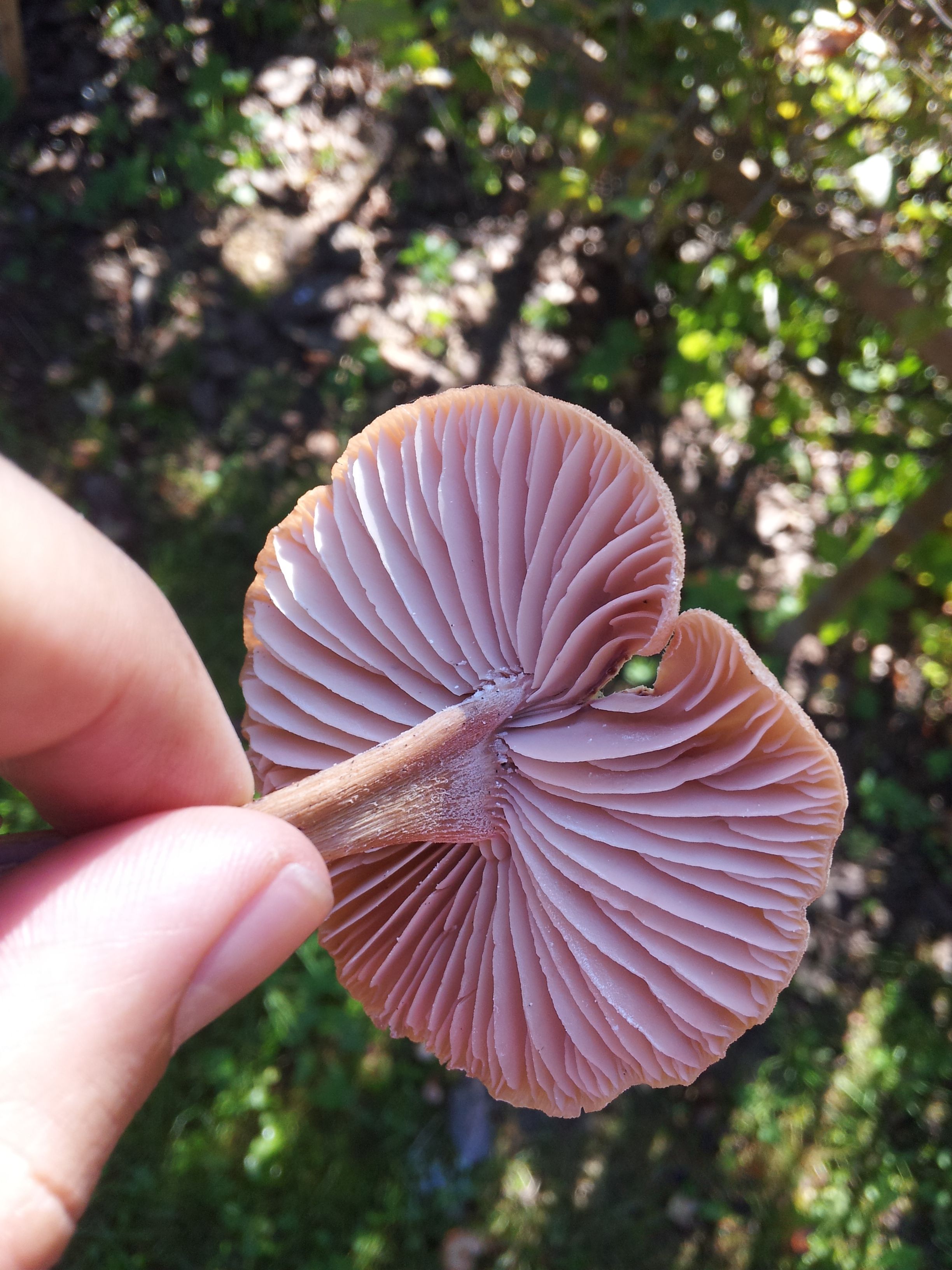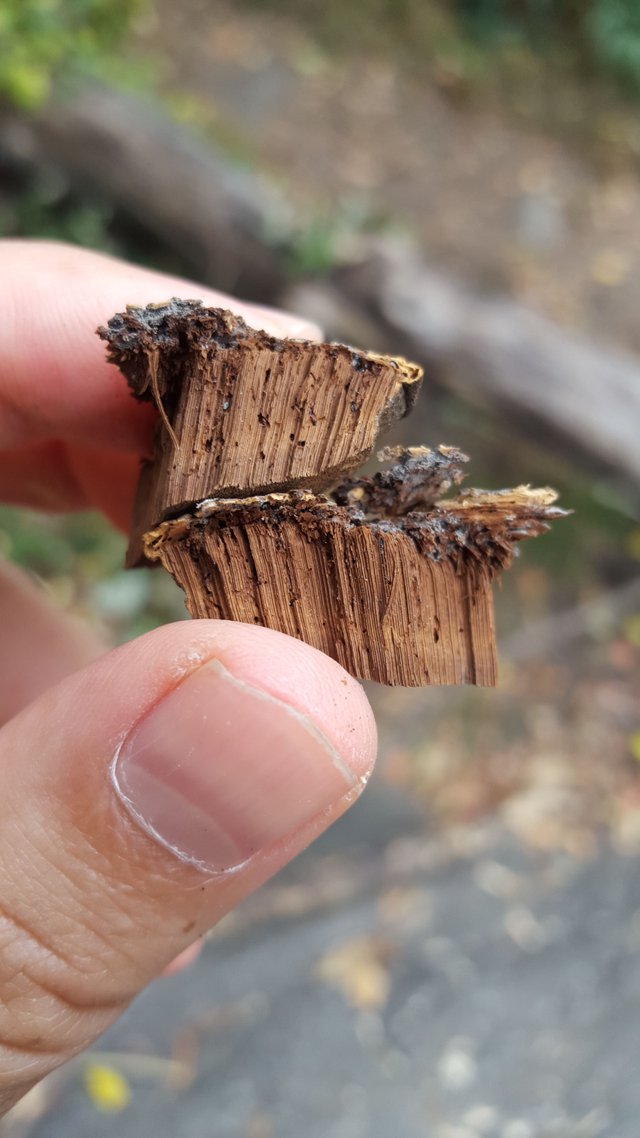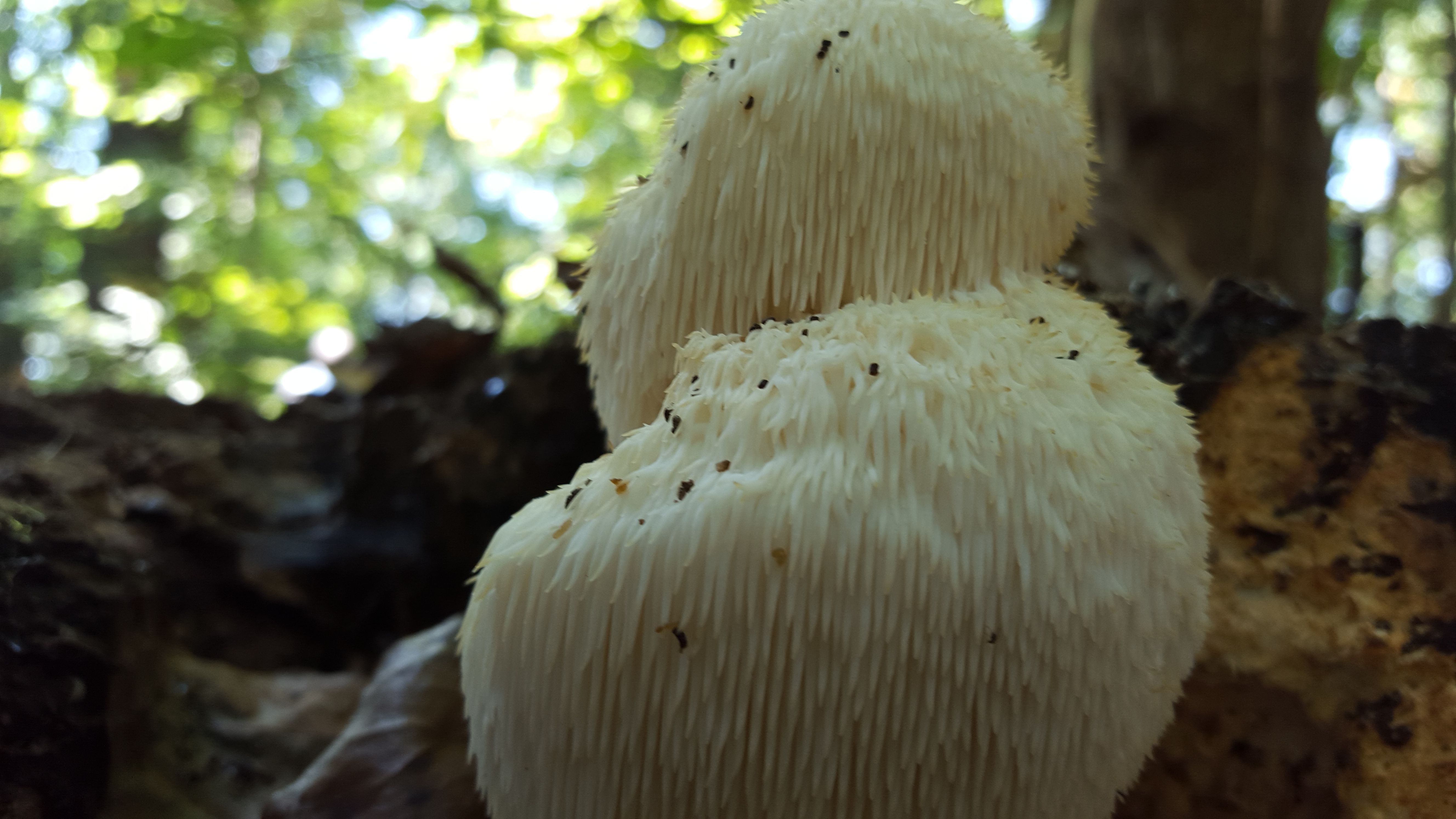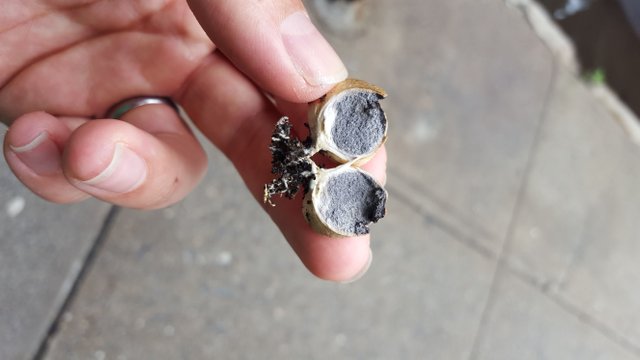The Amateur Mycologist - Random Finds - G.Applanatum Cross Section; A Sad H.erinacea; Tiny Scleroderma citrinum ; And... Leaf Galls
These posts are not for foraging. They are intended for entertainment and intellectual satisfaction only. These posts are not a field guide nor comprehensive in any way - their accuracy is not assured in any way. Do not eat wild mushrooms unless you are a professional, have substantial professional assistance or have a wealth of personal experience with a specific species. Do not make any foraging decisions based on these posts. To do so could be dangerous or life threatening.
These Posts Contains No Information Regarding Edibility Or Toxicity

Hunting for mushrooms turns up a lot of weird, pretty stuff.
Sometimes I'm lucky enough to find a healthy, young specimen of a given species, which allows me to investigate completely and write a detailed post about that specific kind of mushroom.
But the search for mushrooms also reveals a host of less perfect, but no less edifying mycological discoveries. These tidbits, taken alone, don't rise to the level of post-worthiness. Instead, I've waited until I had a bunch of odds and ends to talk about them together in one large post.

What could this dry husk be, releasing a fine powder of spores wherever I crack it in half?
That is a highly decomposed Ganoderma mushroom, probably G.applanatum. Normally this mushroom is super dense and woody - so much so that I could not get close to tearing a recent mushroom I found with my bear hands.
But this specimen was probably kicked off a dead log and left to deteriorate. Probably over weeks the dead mushroom broke down, until it became hoghly brittle. The results can be seen above - the mushroom can be easily cracked by hand. The cross section allows you to see the pore system in all its minutely perfect glory.

Few things are sadder than finding an old Hericium erinaceus, or Lion's Mane.
When fresh, moist and unmolested, H.erinaceus is a perfect white cascade of mushroom icicles. Unlike most mushrooms, H.erinaceus's spore producing surface is the large conglomeration of hanging tendrils or spikes.
Sadly, bugs adore this mushroom and the pristine white flesh is often adorned with a hearty coating of insects, which devoure the mushroom like swiss cheese. This specimen looks OK from the angle I've photographed it by, but it was absolutely eaten through and through by small mites and slugs. Plus when I picked it up a giant millipede squirmed out from deep inside.

A tiny Scleroderma citrinum goes to spore
As I've said in the past I tend to have terrible timing when it comes to my mushroom hunts, often missing the period right after a rain and coming too late to the party. The result is lots of dead mushrooms. However, some mushrooms are hardier than others, either persisting for longer or popping up under localized moisture even when the ground is generally dry.
Scleroderm citrinum, or the common earth-ball, is one of the hardiest you might find. Often they look like scaly pebbles or rocks on the side of paths, growing out of detritus and dirt, often on or near disturbed ground that has been walked on before.
This one was quite tiny - too small to make it into the species post I am writing using a larger recent find, but perfect to squeeze into a random find mishmash.
S.citrinum does have a fairly brief period of white gleba, or interior flesh. However, that state of affairs does not last long, what follows is a wholesale transformation of the gleba into mature spore mass in the form of the dark, almost purple black color you see here. If left to its own devices,the spores will eventually become powdery, like a normal puffball, and be dispersed by any light gust of wind.

This last one had me confused for a little while
These are the leaves of a deciduous tree in central park which have fallen off at the start of spring. A keen-eyed friend found them on the ground while searching for tiny mushrooms like the recently discussed Bird's Nest fungi. I had never seen anything like this before and was not sure whether it was a fungal phenomenon or a quirk of leaf growth.
After doing some research however, it appears that these small growths are not fungal in nature. Rather they are a kind of growth on tree leaves referred to as a "Gall"
A gall is, usually, sort of like a benign tumor that grows on a tree's leaves. Galls can form for a wide variety of reasons, including in response to fungal infection. However, the structure of the gall is not fungal, but a growth of the tree itself, usually spurred on by insects or mites.
In fact, a gall is often a fairly astounding piece of parasitism. Apparently certain mites or insects infect trees and release a series of chemicals which induces a sort of immune response from the tree. The goal of the mite or insect is to basically spur the tree into making a nutritious home for the mite or its offspring. The tree responds to the invader by growing a gall around it. This has the benefit, for the insect or its larvae, of protecting them and providing a source of ready nutrition.
The galls I found here were very hard to the touch and dry. However, they form while the leaf was still on the tree, rather than in the aftermath of their death. Not to say that there aren't fungi which grow on tree leaves - but these are not them - although at first glance they do seem fairly convincing.
THIS POST IS NOT INTENDED FOR FORAGING PURPOSES AND TO USE IT FOR THOSE PURPOSES WOULD BE DANGEROUS. DO NOT HUNT WILD MUSHROOMS WITHOUT RELYING ON A COMBINATION OF PROFESSIONAL FIELD GUIDES, IN PERSON PROFESSIONAL GUIDANCE, OR IN PERSON GUIDANCE BY SOMEONE TRUSTWORTHY WHO HAS COPIOUS LOCAL, SPECIALIZED MUSHROOM HUNTING EXPERIENCE. FAILURE TO DO SO CAN RESULT IN GRIEVOUS PERSONAL HARM OR DEATH.
Photos Are My Own
Information Sources:
[1]Kuo On Scleroderman citrinum
[2]See my past work and references on H.Erinaceus
[3]See my past work and references on G.Applanatum
[4]Missouri Botanical Garden on Tree Galls
[5]University of Minnesota on Tree Galls
Nice post, nice pictures. I really like searching for mushrooms. I did a lot with my dad when i was young!
Thanks you for reminding me those days! Gonna follow you and waiting for new posts :)
I wish I'd had a parent who knew about mushrooms - that kind of generational knowledge and comfort is
@dber, that's a nice pos and very benefit for education. nice discription and good explanation. regards of me @ijoel
Thanks a lot @ijoel
you're welcom
nice post @dber
Appreciate that!
haha -- I don't think there's much interest in foraging any of these mushrooms or galls. That Lion's Mane would have been great, though, if it wasn't infested. It's amazing how some mushrooms can become such an ecosystem of other life, with insects and slugs and other creatures. Fall is such a great season for mushrooms. I hope you find lots and lots this autumn -- edible and otherwise.
It's been so dry here in Oregon's Willamette Valley - I've been heading over to the Pacific Coast to get my fix! It's so interesting to see how seasonality, weather, soils, and land cover all mix together to bring those fungi to fruit!
Have a great mushroom season!
The same to you! I'm pretty excited to get some good hunts in this year, especially with Steemit acting as a major motivator for the hobby. Just waiting for the next big rain storm and hoping it coincides with a day I can take off from work
great article and good job
I will follow this blog! Very good inspiration!
Hi!! I'm new to steemit and searching out like-minded people & reading up a storm. haha I'm happy to finally see another mycohead on here! I'm looking forward to reading more of your mushroom madness and sharing ours too. :)
Amazing post as ever. Though I pity the fresh, moist and unmolested, H.erinaceus' fate. (Your way of describing is weirdly awesome. Haha). Good luck to you dber! I'll wait for the next mushroom hunting. XD
Hundred insects eating its guts is like some form of ancient Babylonia torture!
That is just too cruel! I guess it's fate of most edible mushrooms, if it's poisonous those bugs wouldn't dare. Just a guess though.
Unfortunately for even poisonous mushrooms many of the chemicals that would wreck a humab body are no problem at all for other animald and insects. Definitely can't use the presence of ingestion by other life forms as a sign of toxins in either direction
damm that is really amazing you explored some really awesome things there : ) thanks for sharing them in the post :D
I have a limitless interest in these things - so it's nice to zoom in sometimes on even very small details once in awhile.